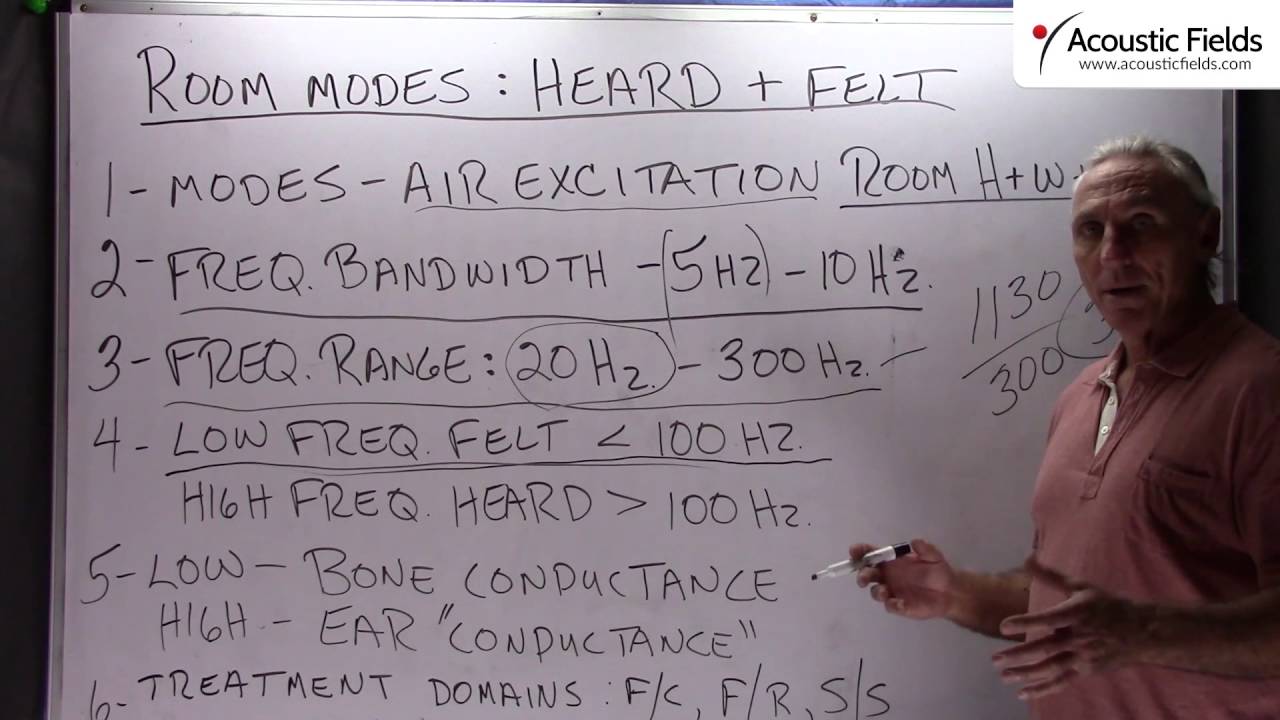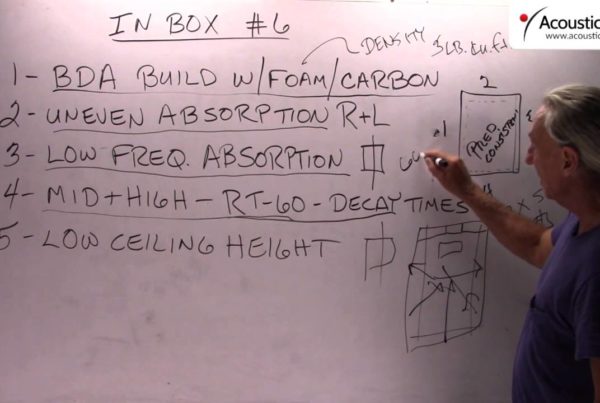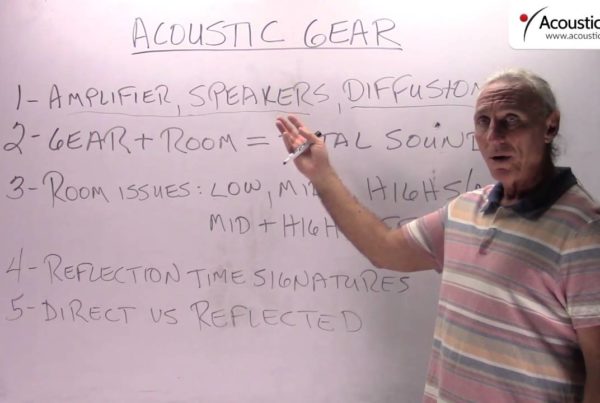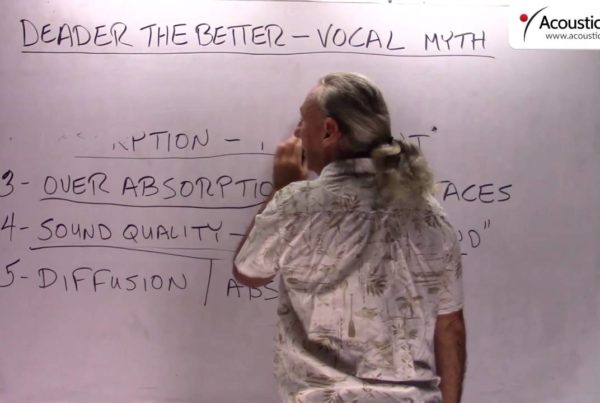Today we’re going to talk about room modes. We all know the term, we’ve heard it before but what is a mode? It’s something that’s both heard and felt. And let’s break it down a little bit and you can understand.
Modes are all about air excitation. You’ve got molecular velocity, the air is moving because too much energy, too small of a space, too long of a wave, won’t fit. So it expresses its discontent if you will through air movement, molecular velocity, getting things moving. So you have to keep that in mind that a mode is just a bunch of energy that’s not happy where it is, physically it won’t fit.
So where do we have it? We have height, width and length in all 3 of our axis that we work with in acoustic. The average bandwidth of most of these modes that we deal with in small room acoustics is 5 to 10 cycles. So you try to minimize the grouping of them, keeping them less than 5 helps with frequency response and definitely helps with treatment cost.
So most of these modes occur in small room acoustics in the frequency range from 20 cycles to 300 cycles. Why? We take 300 wave, we take speed of sound divided by 300, you can see that what have we got? 3.5 feet. See? So plenty of distance for 3.5 foot wave length to live in the room without causing any problems.
So 20 cycle waves, completely different story, 50-60 foot long energy. So we have to try to figure out how to deal with that, too. So we have this range here. So what we have to realize is that low frequency is felt and higher frequency above a 100 cycles is if you will, heard. So bone conductance is the methodology we use with low frequencies, our skeletal systems are actually our ears. And then we use our ears to hear the higher frequencies because our antenna or structure is more conducive to that.
So room modes are air moving in a particular space defined by a particular bandwidth, okay? Felt and both heard and occurs – we have to realize what occurs. So we have 3 axis in our room: we have ceiling to floor, we have sidewall to sidewall, we have front wall to rear wall. You can say 3 sound fields basically.
So in North America which is the area we work mostly in, our ceiling heights are 8 foot. Well, there couldn’t be a worse dimension. So if we take 8 feet, okay? And divide it into this, we’re going to get one about a 135 cycles roughly. So at 8 foot we have a 135 cycle wave. So you can see that it’s not going to take a lot of energy to cause problems with lower dimensions.
And this is why I constantly talk to people about try to find another room. I know you guys get upset about that but you’re really doing yourself a disservice because if you think about an 8 foot ceiling height it’s always going to be a problem through the whole room because it’s just so low.
So any energy below a 135 cycles is going to be a problem. So you have to be really, really careful with dimensions here. So room modes are both heard and felt, remember that. And it’s the air that’s moving. You can walk around your room when you’re playing music and hear them, especially with lower frequencies. You can feel them also.
So study your room, study how it works and then you’ll understand more about all the science in acoustics that you have to go with to solve the problem.








The discussion on ductwork noise transmission from Acoustic Fields highlights crucial aspects of HVAC system acoustics. The movement of air…
Great build plans. thank you Denis
You must use absorption. Never place a chair against a wall.
A friend and I built several diffusors using these plans and they turned out absolutely beautiful. Very good instructions and…